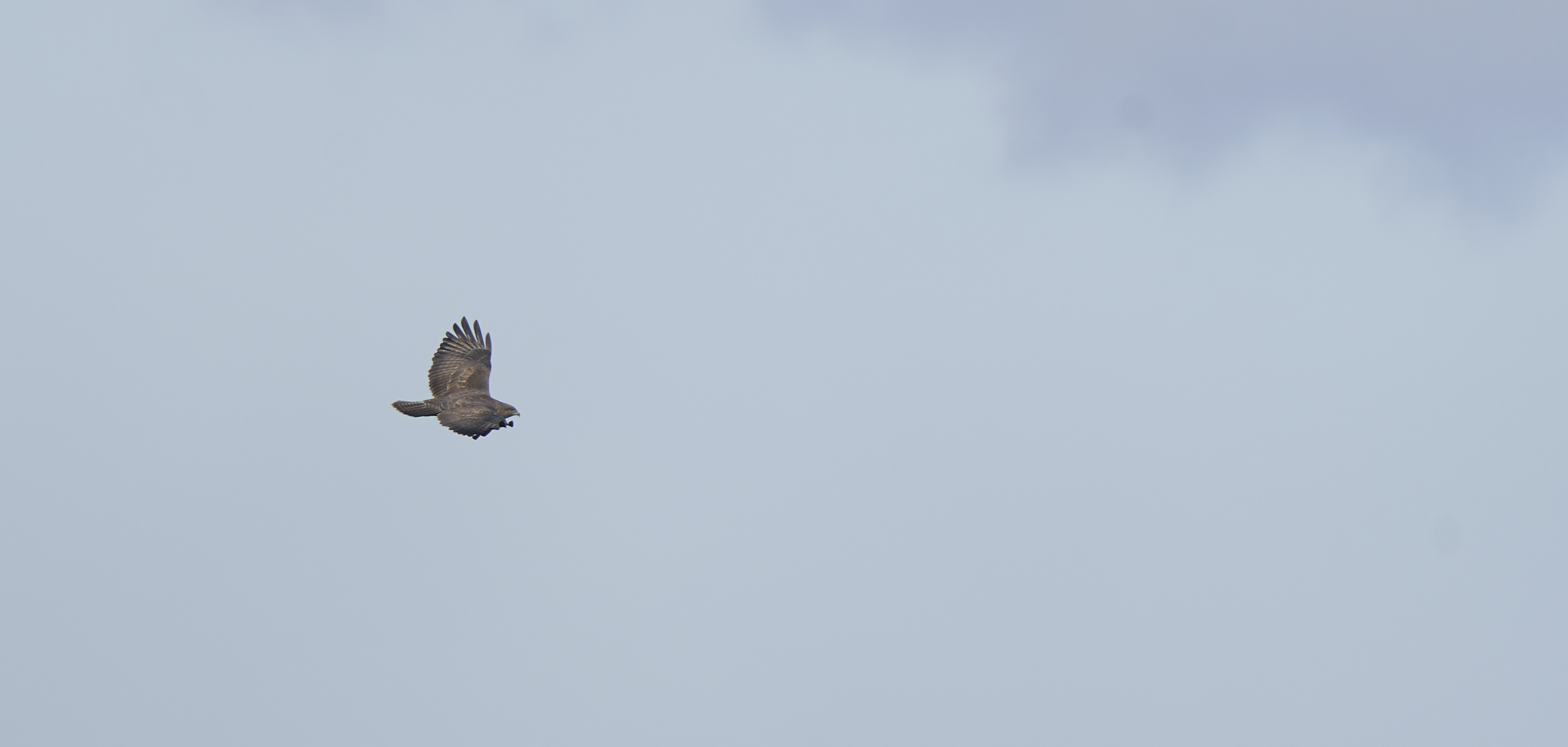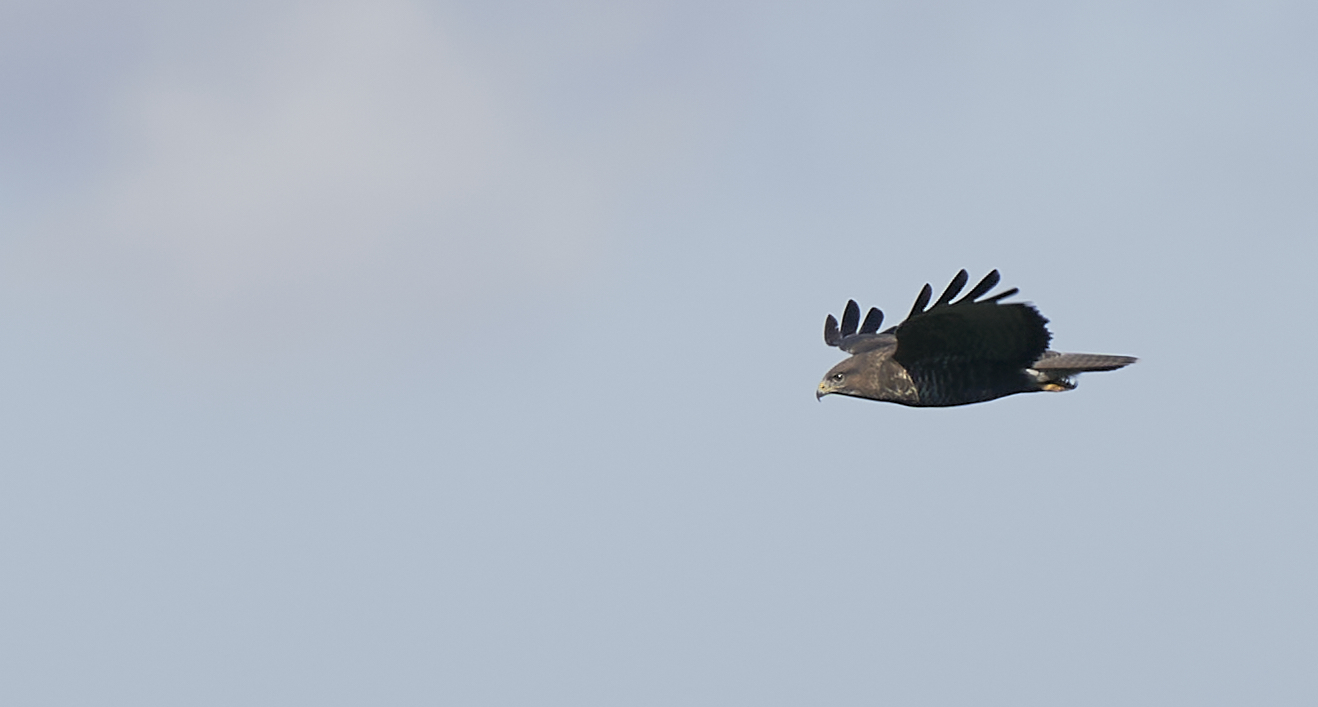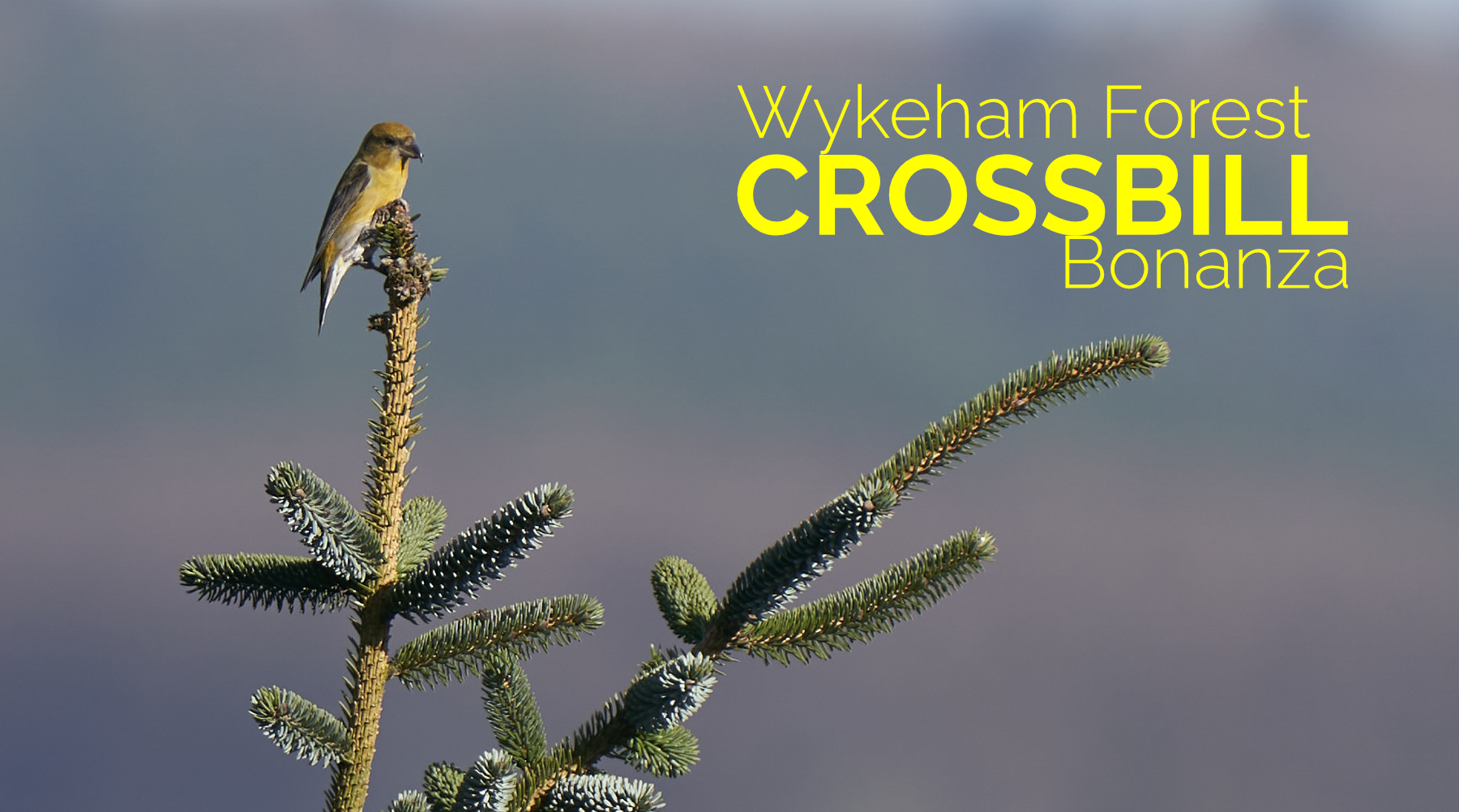Wykeham Raptor Point
We were there for a few hours and all the time we could hear Crossbill behind, and at the side of us. Only once did one land long enough to get a decent image (see below).
Also below is two shots of a Buzzard that came close enough for my version of a decent image. Phil, my birding partner in crime has a much better version of decent images but he posts on Facebook and X, Phil Smithson.
We walked back to where the car was parked, funnily enough the raptor point car park and immediately heard several more Crossbills feeding at the very tops of the conifers. Now if you have ever been there you will know how high these trees are. Below is the results of my film and photographic efforts…be kind.
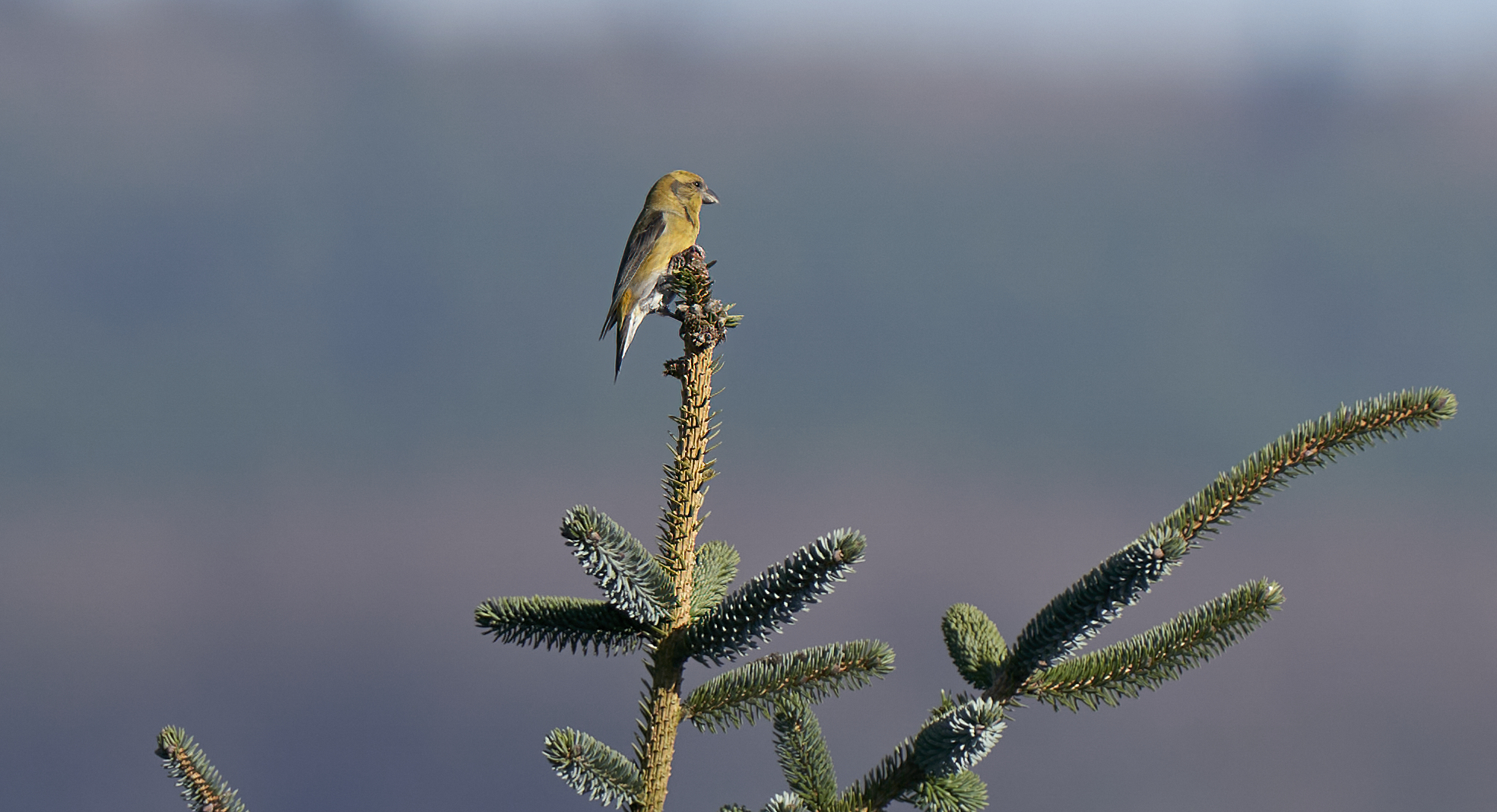
Just before we we were leaving we observed a lower level bird and immediately thought it was a Two Barred Crossbill! It did have two very distinct bars, but experience has taught us all that the bird may be masquerading as something it was not…sneaky!
Upon consulting books, apps and the internet the conclusion was Common Crossbill dressed up as its Two Barred cousin.
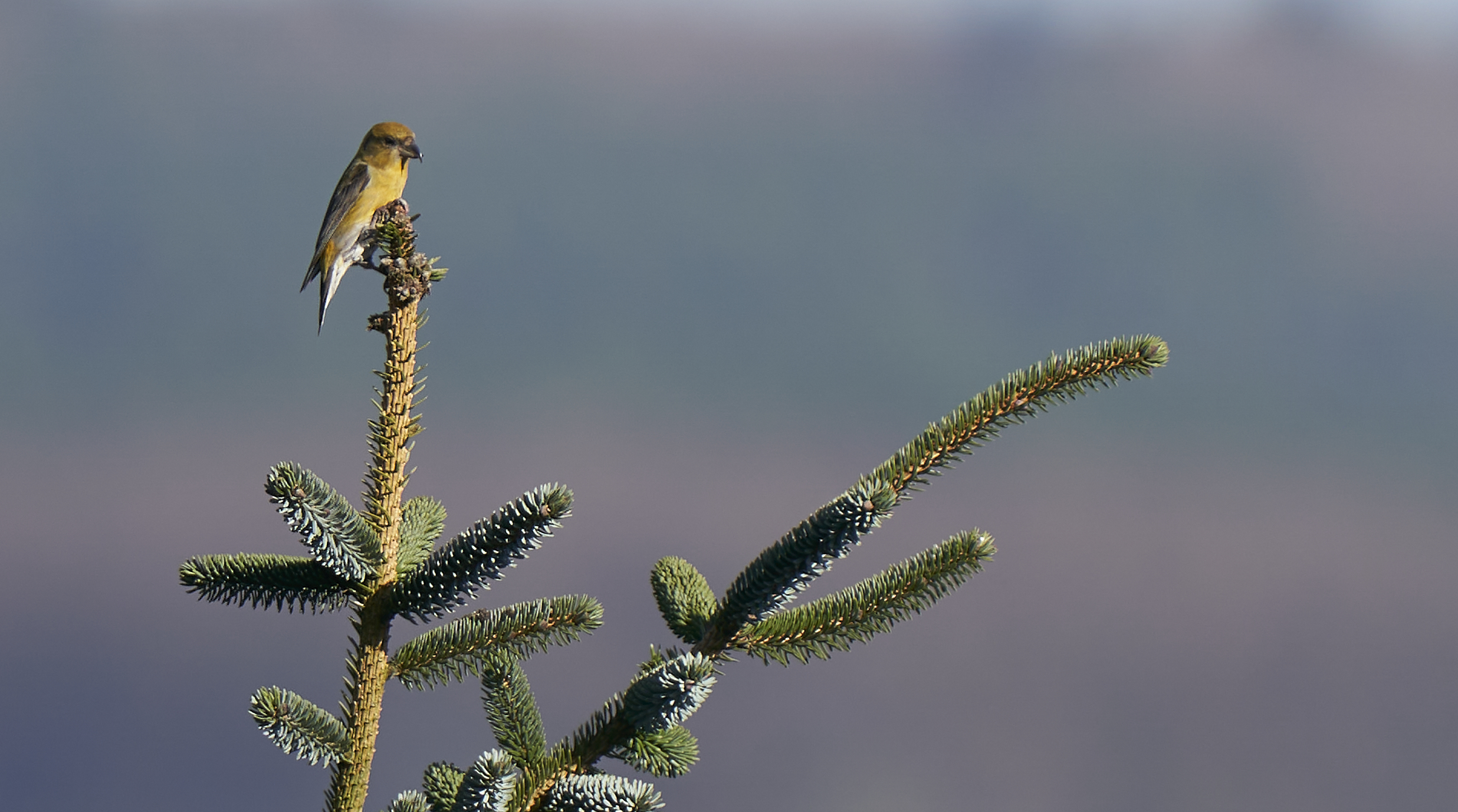
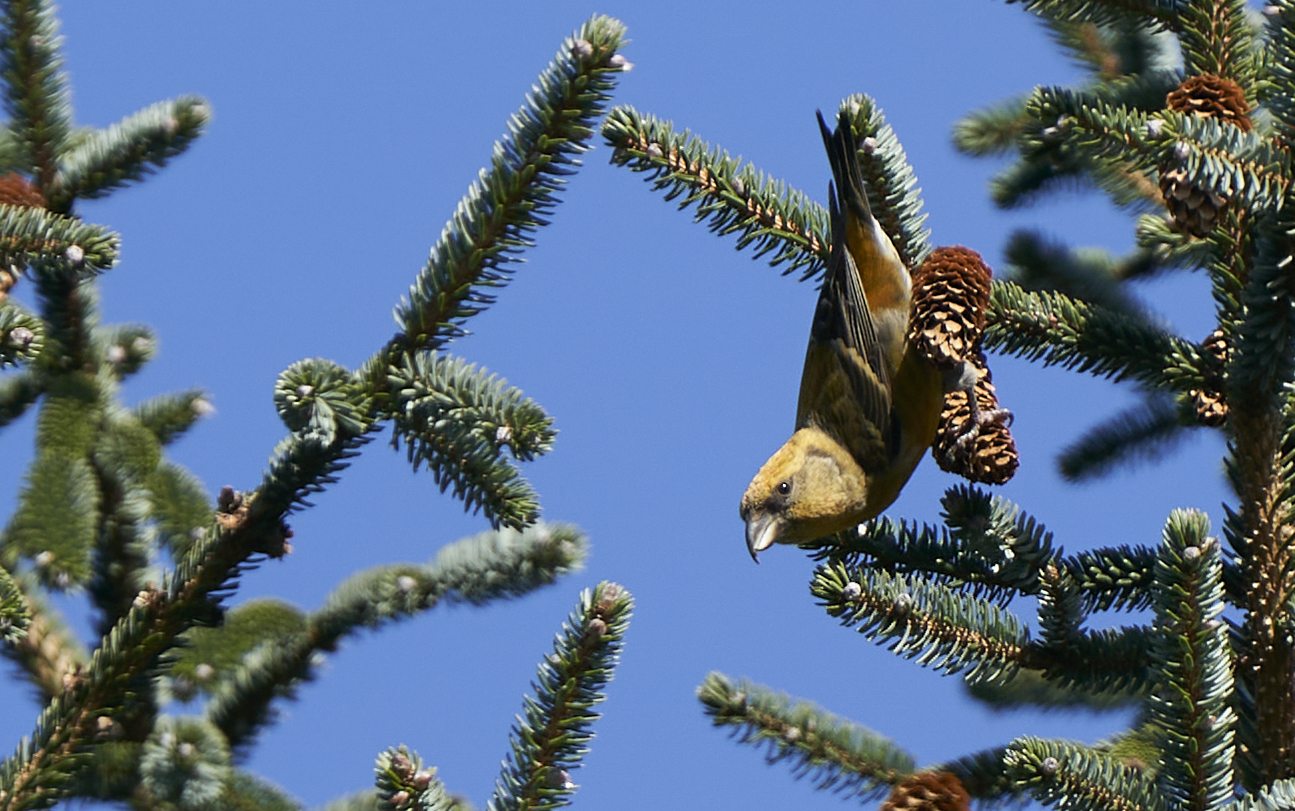
A little bit of science
The Common Crossbill (Loxia curvirostra) is a distinctive passerine bird species belonging to the finch family, Fringillidae. Renowned for its uniquely crossed mandibles, this charismatic bird inhabits coniferous forests across North America, Europe, and Asia. With its specialized bill adapted for prying open the tough cones of various conifer species, the Common Crossbill has become an expert in extracting seeds, forming the cornerstone of its diet.
Males and females of the Common Crossbill display significant sexual dimorphism in plumage coloration. Males often showcase vibrant red or orange hues, while females exhibit a more subdued olive or yellow-green coloration. This sexual dimorphism aids in distinguishing between the genders, although both share the iconic crossed bill structure.
These birds are highly social, often found in small to large flocks, especially during the non-breeding season. Their presence can be detected by their distinctive flight calls, which are loud and metallic. Common Crossbills are known for their nomadic tendencies, moving in search of abundant cone crops. Their ability to travel long distances contributes to their survival in dynamic forest environments like Wykeham in North Yorkshire.
Breeding occurs primarily in the spring and summer months, with females constructing cup-shaped nests in the branches of conifer trees. The female typically lays a clutch of 3-5 eggs, which she incubates for about two weeks. Once hatched, both parents participate in feeding the chicks until they fledge, usually around three weeks after hatching.
Despite its relitivley widespread distribution, the Common Crossbill faces various threats, including habitat loss and degradation due to deforestation and climate change. Changes in cone crop availability, essential for their diet, also pose challenges to their survival. Conservation efforts aimed at preserving mature coniferous forests are crucial for ensuring the continued presence of this unique and captivating species.
Intriguing in both appearance and behavior, the Common Crossbill serves as a symbol of resilience and adaptation in the face of changing environmental conditions, captivating birdwatchers and researchers alike with its specialized feeding habits and social dynamics.
Written by Steve Farley Yorkshirewild
